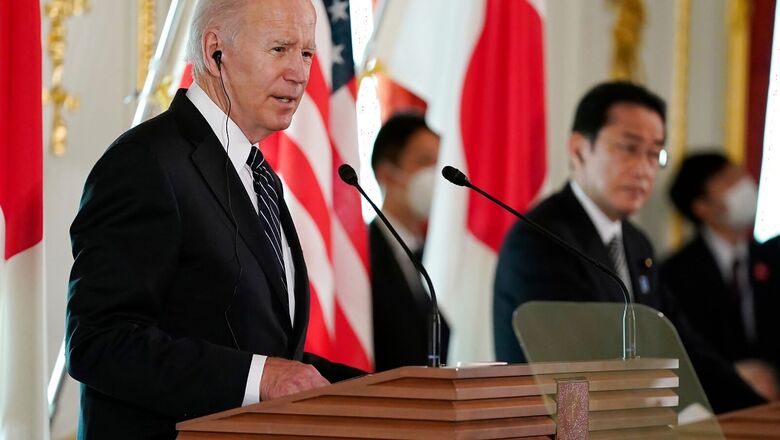
views
It is not a “traditional trade deal”, but a “new model of economic arrangement that will set the terms and rules of the road for trade and technology and supply chains for the 21st century”. This is how US National Security Adviser Jake Sullivan described the Indo-Pacific Economic Framework (IPEF).
The IPEF was launched in Tokyo on Monday in the presence of Japanese Prime Minister Fumio Kishida. The launch was also attended by Prime Minister Narendra Modi as India is among 12 initial partners of the IPEF.
The other nations are Australia, Brunei, Indonesia, Japan, South Korea, Malaysia, New Zealand, The Philippines, Singapore, Thailand, and Vietnam. Together, these 12 countries represent 40% of the world GDP.
Foreign Secretary Vinay Mohan Kwatra had said in a briefing last week that India’s participation was under discussion.
“We all do realise that in so far as the Indo-Pacific region is concerned, the economic segment of it is a very important segment, both in terms of harnessing the opportunities of economic partnership that are available in the region, whether they are in various dimensions of economic areas, or they are related to capacity building,” he said.
“It is going to be a wide-ranging and comprehensive set of countries from across the region, a mix of different kinds of economies,” said Jake Sullivan.
The aim is to cover supply chains, the digital economy, clean energy transformation, investments in infrastructure as well as worker standards under this agreement without having a traditional trade deal that may find resistance in the US over public concerns of job losses.
US Trade representative Katherine Tai had referred to trade deals as a very 20th century tool while discussions were underway since last year on IPEF.
The announcement of the unveiling of IPEF hasn’t gone down well with China. Global Times said, “…embedded in a deep political and strategic purpose, the IPEF is a geo-strategic framework rather than an economic framework.” It has also been referred to as a closed club in China.
Jake Sullivan rebutted this when he said, “It’s just flatly untrue to call IPEF closed. It is by design and definition an open platform. And we do expect, in addition to the countries that join for the launch, others will come along in the months and years ahead. That being said, the breadth of participation tomorrow was such that it will very much show that it’s anything but a closed club. It is a very wide-ranging membership.”
In the region, China is part of the economic framework with the ASEAN countries called the Regional Comprehensive Economic Partnership. RCEP is the world’s largest trade bloc. It has 15 members, which includes 10 ASEAN countries plus China, Japan, South Korea, Australia and New Zealand.
India had exited the RCEP negotiations over “significant outstanding issues”. This largely pertained to India’s concerns over unbridled exposure to Chinese products as there were inadequate safeguards against surge in imports as per Indian assessment. The other concern also being about circumvention on rules of origin, which means the source of product.
Two other Quad countries, Japan and Australia, are part of the RCEP. The US is not part of RCEP either. So can IPEF be seen as a counter to RCEP?
While answering questions about RCEP, Jake Sullivan also said, “It is going to be a big deal and is going to be a significant milestone in US engagement in the Indo-Pacific. And at the end of the President’s first term, I think we will look back and say this was a moment where the US engagement in the Indo-Pacific got kicked into a different gear.”
Read all the Latest News here




















Comments
0 comment